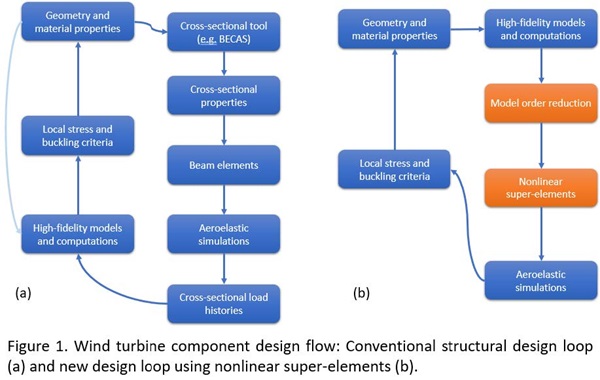The use of linear super-elements based on modal order reduction techniques, notably the Craig-Bampton method[1], date back to the 1960s. However, the use of reduction methods in scenarios where nonlinear effects are important require the extension of classical methods by including modal derivatives on the reduction basis. Geometric nonlinearities in wind turbine blades due to the large flapwise deflections result in changes of the coupling between edgewise bending and torsion in the edgewise modes.
The project, supervised by Associate Professor Lars Duggen (duggen@sdu.dk), will consist of the development of non-linear super-elements, based on the expanded Craig-Bampton method, to approximate nonlinear finite elements models based on s hell and beam e lements. This will provide a framework for the blade design where load and blade design engineers can work on a common model basis, reducing the gap between design and dynamic analysis.

Strong focus will be directed in expanding the physical interpretation and understanding of wind turbine blades mode shapes derivatives and their influence on the dynamical behaviour. Another concern of the project is to evaluate the accuracy variation of the approximation model around the equilibrium position in order to establish the region where the reduced model approximates the high-fidelity model with acceptable accuracy.